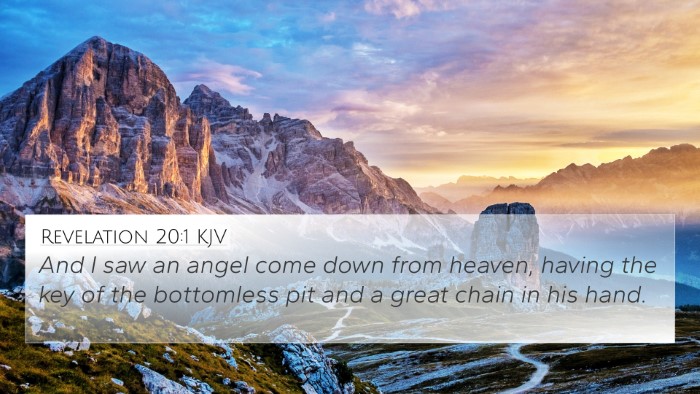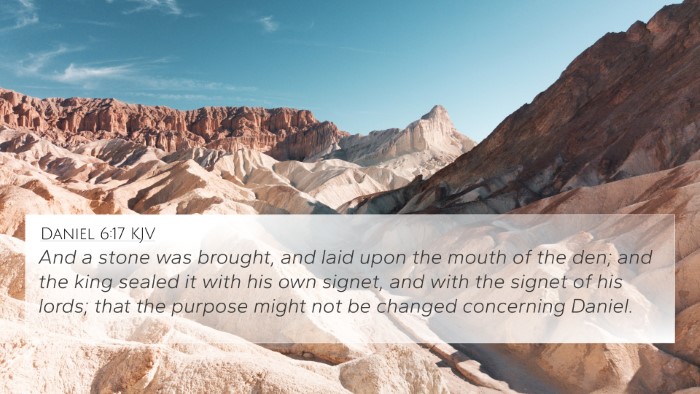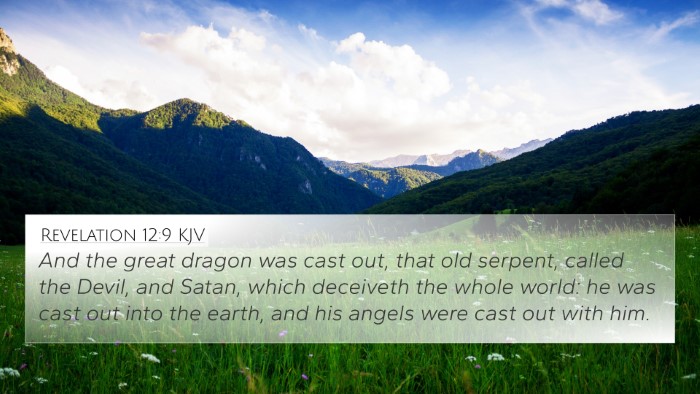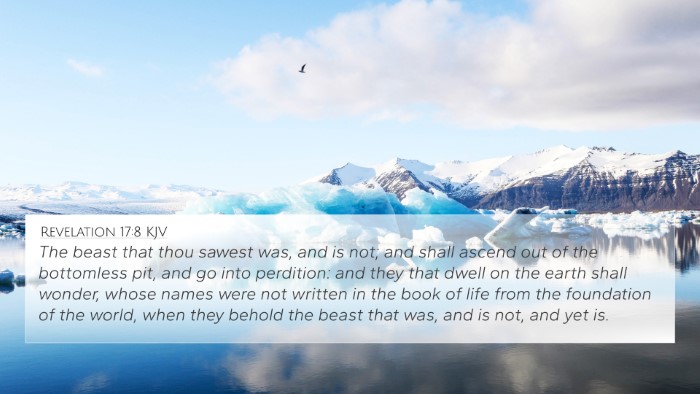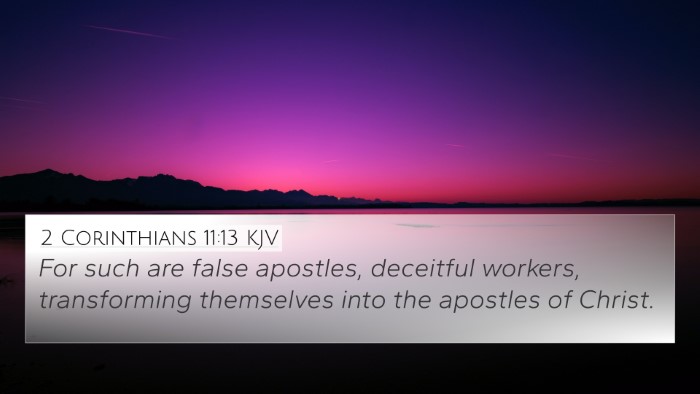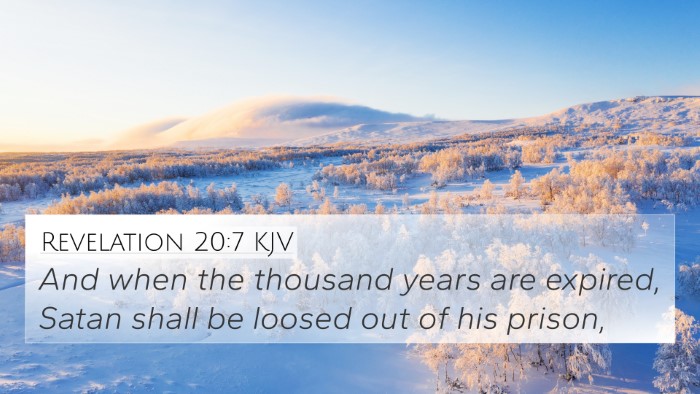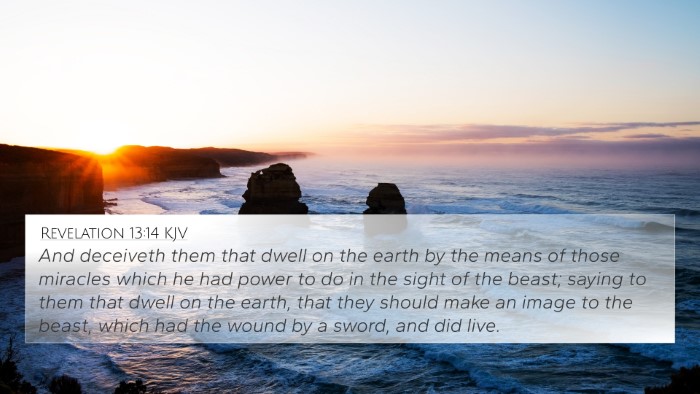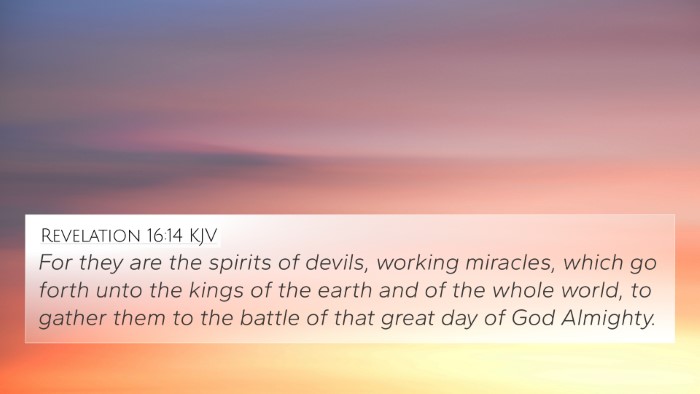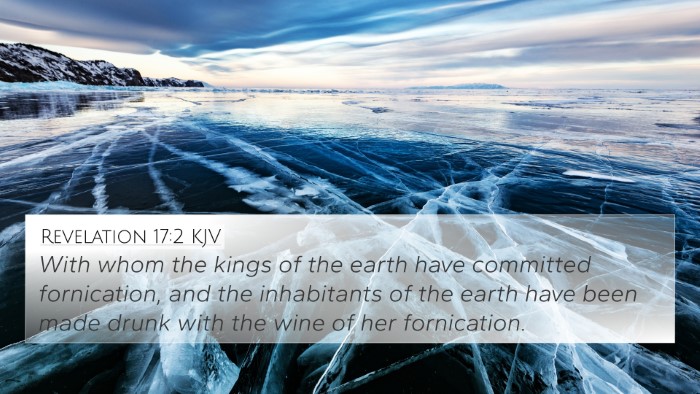Understanding Revelation 20:3
Revelation 20:3 states: "And cast him into the bottomless pit, and shut him up, and set a seal upon him, that he should deceive the nations no more, till the thousand years should be fulfilled: and after that he must be loosed a little season."
Meaning and Interpretation
This verse is a pivotal part of the eschatological narrative outlined in the Book of Revelation. It speaks about the binding of Satan for a thousand years, emphasizing the period where he will have no influence over the nations. This symbolism highlights a time of peace and reign of Christ, which is interpreted by many as the millennium.
Commentary Insights
According to Matthew Henry, this verse illustrates God's ultimate authority over evil forces. The act of casting Satan into the abyss signifies God's power to restrain evil and protect His people. Henry emphasizes that the sealing of the abyss prevents further deception of the nations, which underscores God's sovereign control over spiritual matters.
Albert Barnes takes a similar stance, noting that this verse projects a future time of divine rule where righteousness prevails. He points out that the binding of Satan allows for a period where the followers of Christ can thrive without the influence of evil, leading to spiritual revival and growth. Barnes interprets the “thousand years” as a symbolic duration representing a significant but complete period of Christ’s reign on earth.
Adam Clarke offers a more detailed analysis, suggesting that the “bottomless pit” indicates a place of complete separation from God's presence. Clarke notes the importance of the seal set upon Satan as a divine guarantee that he will not disturb the peace established during the millennium. Furthermore, the release of Satan after the thousand years signifies a final confrontation between good and evil, raising themes of testing and the ultimate triumph of God over all forces contrary to His will.
Cross References for Revelation 20:3
Understanding Revelation 20:3 is enriched through its connections with various other biblical texts:
- Isaiah 24:21 – The Lord punishes the host of heaven and kings of the earth, paralleling the binding of evil forces.
- Matthew 12:29 – The binding of a strong man before plundering his house alludes to the elimination of Satan’s power.
- Luke 8:31 – The demons' plea not to be sent to the abyss connects with the separation illustrated in Revelation 20:3.
- Revelation 20:1 – Describes the angel coming down from heaven with the key to the abyss, directly preceding the verse in focus.
- 2 Peter 2:4 – Discusses the punishment of fallen angels, which resonates with the theme of restraint seen in Revelation 20:3.
- Revelation 20:7-9 – The release of Satan after the thousand years further elaborates the narrative of conflict between good and evil.
- Romans 16:20 – God crushing Satan reflects the cosmic struggle described in Revelation.
- John 12:31 – The judgment of this world and the casting out of the ruler of this world corresponds to the binding of Satan.
- Matthew 25:41 – The eternal fire prepared for the devil and his angels ties to the ultimate fate described in Revelation.
- Revelation 21:1 – The promise of a new heaven and new earth follows the period of restraint, illustrating God’s final restoration.
Thematic Connections
The themes encapsulated in Revelation 20:3 can be linked with numerous biblical concepts:
- Divine Sovereignty – God's ultimate control over all forces, as illustrated in Isaiah and Revelation.
- Hope for Believers – The period of peace encourages Christians to look forward to Christ's reign.
- Final Judgment – The release of Satan indicates the inevitability of confronting evil before ultimate victory.
- Spiritual Warfare – Recognition of Satan’s influence emphasizes the importance of spiritual vigilance among believers.
- The Nature of Time – The concept of “thousand years” invites discussion on the interpretation of biblical time frames.
Practical Applications
For readers and scholars, understanding Revelation 20:3 is critical for several reasons:
- It enhances knowledge of eschatological themes within the Bible.
- It provides assurance to believers regarding God’s control over evil and future events.
- It encourages Christians to actively engage in spiritual warfare through prayer and vigilance.
- It inspires hope in God's ultimate plan for justice and restoration.
- It illustrates the importance of fellowship and community in the face of spiritual challenges.
Conclusion
In summary, Revelation 20:3 presents a powerful vision of God’s intent to limit and ultimately defeat evil. Through the insights gathered from public domain commentaries and various cross-references, we can appreciate the depth and complexity of this verse while being encouraged by its implications for believers today. The exploration of this text not only enriches our understanding of Revelation but also strengthens our faith in the overarching narrative of Scripture that celebrates God’s sovereignty, justice, and promise of peace.



